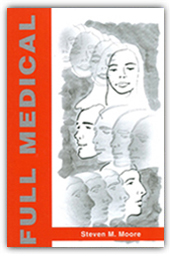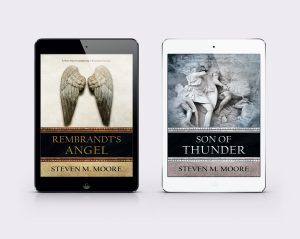Did she say that?
Writers should always strive to strike a balance in their prose. That’s another way of saying they should follow the Goldilocks Principle: Not too much, not too little, but just enough of narrative, background, characterization, and dialogue. The last seems to be a problem for some, though.

A reader of my very first novel Full Medical (2006) said she loved the dialogue. I have to confess that I don’t pay much attention to it; I just tell my story, and dialogue is part of that telling. After all, I’m more an avid reader than a writer, so I’ve experienced a lot of good storytelling techniques in my reading over the years. What’s more, that experience allows me to analyze the differences objectively—what works and doesn’t work.
First, dialogue must help tell the story. An author must move the story forward, above all (that “flow” I discussed last week), and dialogue should help the writer do that effectively if done right. Readers might see something like the following in my prose: After the usual greetings, Sam said, “I heard that….” In other words, focus should be on meaningful conversation, not banal greetings. The latter occurs in ordinary life when two people meet after a while, but something like: “How are you, Sam?” “I’m fine, Jerry. What about you?” “I guess okay. What’s new with you?” The reader is probably already bored, and if the author writes pages and pages of that, the reader will find another book.
Second, break it up. While the author shouldn’t be mimicking ordinary speech, people don’t usually give a long oration without interruption either. There’s body language, internal dialogue (what the speaker is really thinking), even tech and other breaks (cellphones ringing, a person consulting their laptop, hugs and kisses…whatever.) While droning on and on might be a character’s habit, long stretches of one character speaking can be as deadly as long stretches of narrative. (If you like that sort of thing, read Atlas Shrugged, probably the most boring book in the English language, and not only for dialogue.)
Third, be careful with dialogue tags. Consider: …he answered angrily and …she whispered sneakily. These are verboten. The –ly adverbs are questionable to begin with—clenched fists and lowered voices will better clue the reader in. As a minimalist writer, I’d minimize the use of words like answered and whispered too, preferring a simple said. That makes for lean prose and helps speed readers too (I’m one). Dialogue tags should only be used to ID the speaker. That’s not even necessary if you’re tick-tocking between male and female (or ET and human!).
If you have difficulty with dialogue, it’s useful to go back over the dialogue in your prose for these items. Don’t believe writing gurus if they tell you that you check it out by reading it aloud. It shouldn’t sound like everyday speech; it should distil ordinary speech (see above). Above all, make sure it doesn’t dam up the flow of your story. Think of the following question: Is my dialogue here an essential part of the story? Does it move it forward? Dialogue is an essential part of modern storytelling, but some writers have to work at it. If that’s you, do so…for the benefit of your readers.
***

Comments are always welcome!
“Esther Brookstone Art Detective.” While you’re sitting on the edge of your recliner eagerly waiting for me to announce Death on the Danube, #3 in this series, don’t forget there’s a lot of entertaining reading to be found in the first two books, Rembrandt’s Angel and Son of Thunder, very different stories tied together by Esther’s obsession with finding the truth. In the first book, the Scotland Yard inspector obsesses with recovering a painting stolen by the Nazis; in the second, she obsesses with finding the tomb of St. John the Divine. Her paramour, Interpol agent Bastiann van Coevorden, struggles to keep her on an even keel. Available wherever quality books are sold, including at the publisher Penmore Press.
Around the world and to the stars! In libris libertas!
